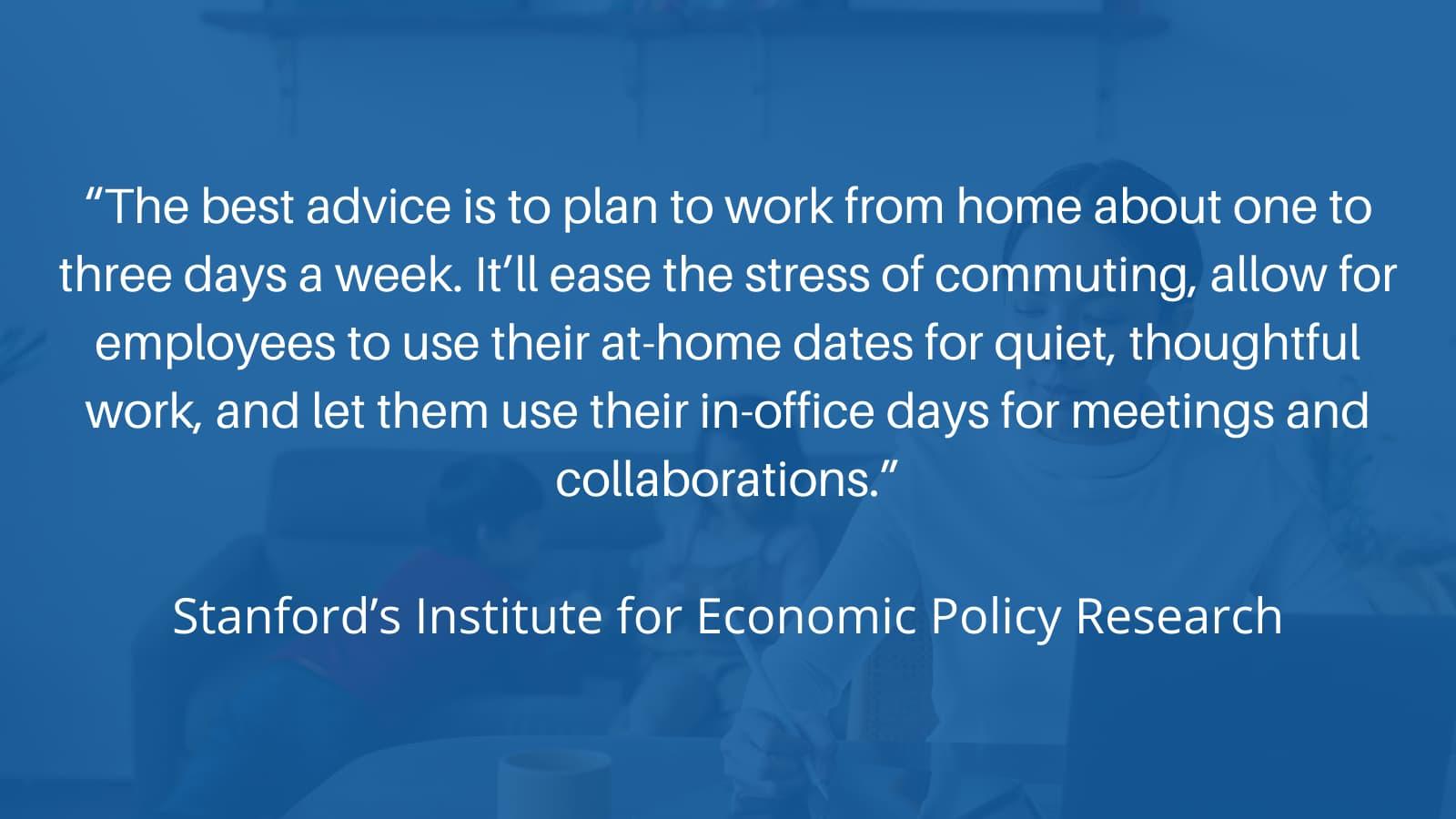3 Benefits of a Hybrid Workplace
For the benefit of employees, organizations are exploring more flexible and hybrid workplace solutions.

In recent years organizations across the globe have been forced to transform how they operate. This was, of course, expedited in 2020 due to COVID-19 when almost overnight working from home became an unexpected necessity.
For employees to continue to work safely and effectively, organizations were pushed to provide more flexible solutions. While this has been a difficult process for many, the emerging concept of a hybrid workplace has provided hope for the future.
A hybrid workplace combines remote work with office time. This enables flexible scheduling and a more balanced experience for employees as focus shifts to their individual needs and wants. This is highlighted in a study by Stanford’s Institute for Economic Policy Research in which it is revealed that 55 percent of US workers want a mixture of home and office working.
When implemented and managed effectively, a hybrid workplace can provide several benefits for employees, which in turn can result in a happier work environment, revenue generation, and improved innovation and productivity.
This is particularly important for the future of work as Generation Z will soon become the largest segment of the workforce and they are interested in a hybrid approach to work. 74 percent of Gen Z would prefer either working from home or splitting time between home and work.
The Hybrid Workplace Model

The hybrid workplace model is based on an arrangement where employees split their time between the office (or a central location) and working from home, depending on their personal convenience.
As the hybrid workplace model is location-flexible this allows workers to decide where they are at their most productive, based on their preferences and the task at hand.
The various types of hybrid workplace models often differ according to industry or role and they cannot be applied to every type of organization, however, a wide range of hybrid arrangements have emerged, including the At-Will, Split Week, Shift Work, and Week by Week models.
Allowing employees to combine onsite and offsite work as they and their employers see fit, grants employees flexibility seldom seen previously. The Pulse of the American Worker Survey found that 68 percent of American workers say the ability to work remotely and on-site is the perfect work model.
Creating a hybrid workplace is the future of how organizations will function long term. Many businesses will need to adjust their current business models to compete. However, once implemented, a hybrid workplace will keep employees happy, engaged, and contributing effectively.
A hybrid workplace model can benefit both employer and employee. It allows employers cost-cutting opportunities, for example, the ability to hire talented people without having to spend as much on office space or other overheads.
For employees, the hybrid workplace comes with a number of benefits. Let’s explore those in more detail:
3 Benefits of a Hybrid Workplace for Employees
Increased Productivity
Traditionally, it has long been believed that an employee working from home will be less productive than one working in an office. Previously, this could have been the case, especially as technology prevented the lines of communication now available to teams worldwide.
Organizations were under the impression that employees would be more easily distracted in their home environment or more likely to procrastinate. However, we are seeing that these are outdated beliefs. A recent survey by the economist found that 34 percent of respondents said that face-to-face interruptions from colleagues were the biggest reason they lose focus at work.
A study by Standford of 16,000 workers over 9 months found that working from home increases productivity by 13 percent. This increase in performance was due to more calls per minute attributed to a quieter more convenient working environment and working more minutes per shift because of fewer breaks and sick days.
Remote workers are often revealed to be more productive than their in-person counterparts due to an increase in independence and therefore accountability, but a permanent remote position can be challenging for some people. That’s why a hybrid workplace can offer employees the best of both worlds. Combining the improved productivity of working remotely with in-person collaboration when it will be beneficial, or when the employee/employer feels the need for in-person interactions.
According to a survey by ConnectSolutions, 77 percent of those who work remotely at least a few times per month show increased productivity, with 30 percent doing more work in less time and 24 percent doing more work in the same period of time.
Improved Job Satisfaction
A well-managed hybrid workplace enables employees to become more responsible and accountable with less chance of micromanagement. It also allows employees to work alongside their employers to ensure the most effective use of their time.
With a shift towards hybrid workplaces, the office has evolved from an everyday workspace to a place designated for socialization, collaboration, and building company culture. With a mixture of remote working and on-site working, flexibility becomes a feasible option.
Flexibility boosts overall job satisfaction and individual performances, and results in improved employee happiness, reduced staff turnover, and a highly driven workforce, ready to help their employers achieve their goals.
Communication is key in a hybrid workplace and it is important for employees to have clear and simple ways to work as a team and present information. This is becoming more and more achievable with the various sharing tools and collaborative measurements available, meaning remote workers are less likely to feel isolated or out of the loop when not in the office.
A hybrid workplace gives employees more freedom regarding when and where they work. This increased autonomy allows them to fit work around the rest of their lives. An improved work-life balance is one of the most desired offerings for happy, healthy, engaged employees.
Positive Health and Well-being
The past year has shown that a hybrid workplace has a broad appeal to employees of all job levels, genders, and parental standings.
Remote working has provided employees with increased flexibility, a healthier work/life balance, the ability to adjust hours to suit their needs, plus more time with family. Personal costs have also been reduced in many cases as expensive commutes have decreased. This also allows employees more time to use in ways that can benefit their health and well-being.
Hybrid workplaces provide employees with choices. They can be home when they need to be and still have the opportunity to meet in person when needed. For those who crave social interaction, they can collaborate face-to-face, while others who may be seeking a quieter workspace can also remove themselves from stressful home situations.
The autonomy to schedule their working day and activities in a way that suits them best supports overall employee wellbeing. The hybrid workplace model leads the way in shaping the future creating a middle ground that puts everyone’s mental well-being first.
As we all reimagine the future of work, the benefits of the hybrid workplace for employees and employers are becoming clear.
There are many working models available, with their relevance depending on the nature of work, providing optimal working conditions for employees both in the current climate, and moving forwards.


